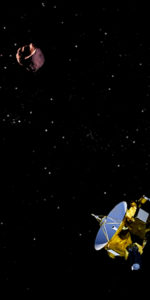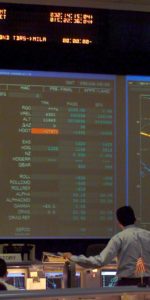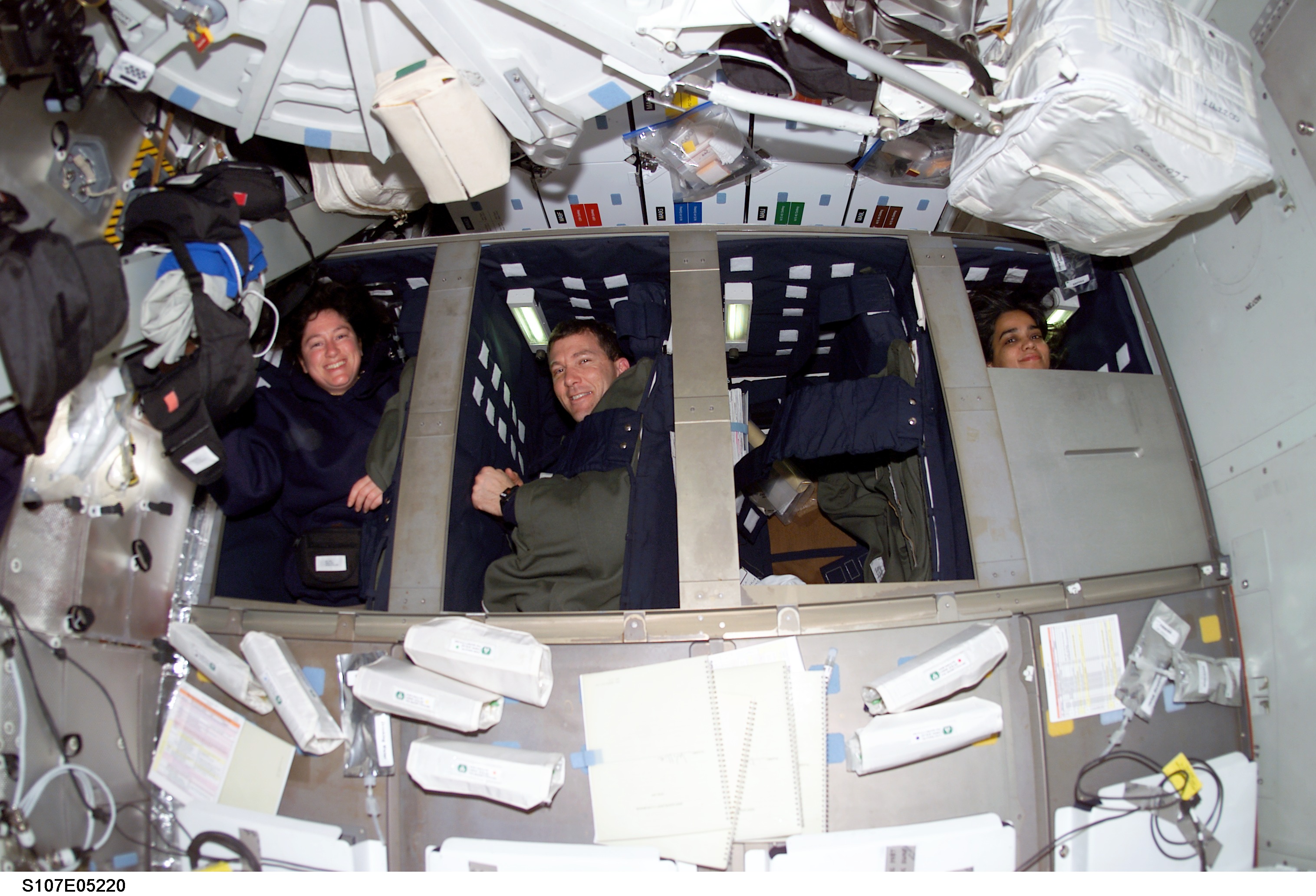
When Columbia’s payload bay doors opened at around midday EST on 16 January 2003—a few hours after NASA’s oldest Space Shuttle had reached orbit for the 28th time—they exposed a cargo unlike anything which had flown into space for almost five years. Most shuttle missions in the interim had been exclusively dedicated to the construction of the International Space Station (ISS) and only four—a radar-mapping flight, two Hubble Space Telescope servicing calls and the deployment of the Chandra X-ray Observatory—had been dedicated to non-station activities.
This caused concern to both the scientific community and Congress, who feared that such paucity of “science” missions threatened to harm the United States’ lead in the microgravity research arena. “We can’t expect the scientific community to remain engaged,” Congressman Dana Rohrabacher told a March 2000 hearing, “if researchers do not see hope that there will be research flight opportunities on a regular basis.” Columbia’s 16-day mission, STS-107, was set to address that issue.
Congressman Dave Weldon, a Republican from the shuttle’s home state of Florida and a colleague of Rohrabacher, agreed that research missions like STS-107 were critical for demonstrating experiments before committing them to the space station. Six experiments were housed on a bridge-like facility at the rear of Columbia’s payload bay, known as the Fast Reaction Experiments Enabling Science, Technology, Applications and Research (FREESTAR). The remainder were housed in the shuttle’s middeck and aboard a unique “double” pressurized module, provided by the commercial entity, Spacehab, Inc. This Research Double Module (RDM) carried additional environmental controls for humidity removal, electrical power and experiment data-handling, together with 2,100 cubic feet (60 cubic meters) of volume to support 8,500 pounds (3,850 kg) of payloads.
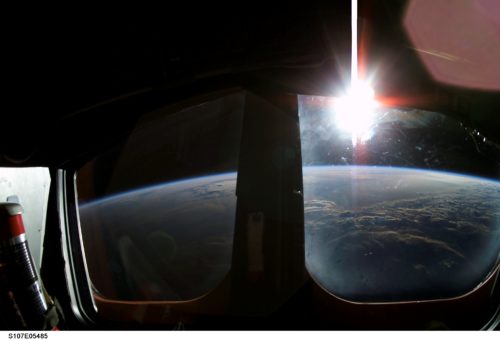
Those payloads were divided roughly between the life and physical sciences. On the life sciences front, experiments investigated pulmonary and cardiovascular changes, bone cell activity, astronaut sleep patterns and other areas, involving the seven crew members, together with a contingent of rats, fish, spiders, ants, silkworms and bees. Crew assignments for this ambitious mission got underway in September 2000, when veteran astronaut Mike Anderson was named as the payload commander. He was joined by seasoned shuttle flier Kalpana Chawla and “rookie” astronauts Dave Brown and Laurel Clark, together with Israel’s first astronaut, Ilan Ramon. Two months later, on 1 December, Rick Husband was assigned to command STS-107, with Willie McCool as his pilot.
Working in two shifts, the crew would operate more than 80 investigations around the clock during their 16 days in orbit. Leading the “Red Team” was Husband, joined by Clark, Ramon and Chawla, with the “Blue Team” headed by McCool and including Anderson and Brown. At the time of the crew assignments, the mission was targeted to launch in August 2001, but was extensively delayed, as higher-priority ISS and Hubble missions flew first. Moved to mid-2002, Columbia’s flight ultimately settled on a July date, before being postponed again by fleet-wide technical troubles. It ultimately was rescheduled to launch on 16 January 2003.
“The issue is that, on our orbiter, there are lots of attitude requirements,” Chawla remarked in one of her last interviews before leaving Earth. “The orbiter should be in a certain attitude to do the ozone measurements; in a different attitude to do the dust measurements; in a “free-drift” attitude…to do some of our very microgravity-sensitive experiments.” One series of experiments, featuring the Combustion Module, demanded a particularly vibration-quiet environment, with virtually no thrusters disturbances, and this demanded almost a full dedicated day of operations.
That efficiency began within minutes of achieving orbit, when Dave Brown bailed out of his seat on the flight deck and moved crisply into position to photograph the just-jettisoned External Tank. With Mike Anderson acting as what Rick Husband called “the post-insertion guru”, supervising the activation of STS-107’s many payloads, astronauts Ilan Ramon and Laurel Clark busied themselves with setting up the Spacehab Research Double Module for an intensive 16 days of research. Elsewhere, Brown and Willie McCool started up the FREESTAR pallet and laptops to support other experiments. Elsewhere was Israel’s high-profile dust study, which brought joy on 19 January when it detected an “elf”—a type of electrical phenomena which materialize above thunderstorms in time spans of a tenth of a millisecond—in one of its earliest data-takes. Overall, FREESTAR performed admirably and Mission Manager Tom Dixon described STS-107 as “one of the smoothest missions I’ve ever had a payload on…and the closest we’ve ever stuck to the pre-mission timeline.”
Only the most minor of glitches troubled Columbia herself. One of two dehumidifiers to collect and distribute water inside the Spacehab module produced an electrical “spike”; an identical system had earlier sprung a leak and had been shut down. Following the reconfiguration of a valve to allow cool air from the orbiter’s cabin to flow into the Spacehab, the temperature stabilized and was brought down to comfortable levels. In fact, the warm temperature inside the module had brought envious comments from staff at NASA’s Goddard Space Flight Center: for overnight forecasts in Maryland predicted were cold and even Cape Canaveral had endured snow flurries on 17 January.
For the STS-107 crew, their impending return to Earth closed a chapter on a job well done. “Science-wise, this flight’s been absolutely fantastic,” said Mike Anderson. “I think a lot of our experiments have exceeded our expectations by 100 percent. We’ve seen things we never expected to see.” In spite of the temperature, the work inside Spacehab continued at a rapid clip. Ten days into the mission, on 26 January, the investigators were lauding a 100-percent success rate for the device, but noted that the most critical data would be acquired in the hours after touchdown on 1 February.
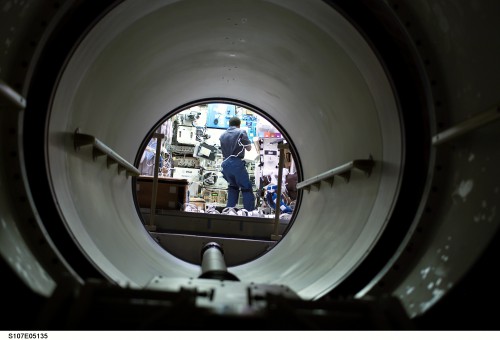
For the “rookie” members of the STS-107 crew, their first experience of weightlessness was a magical time. Laurel Clark remembered the noises. Since everything was in a perpetual state of free-fall, she found it beautiful that belts and D-rings tinkled against each other, producing a gentle background music. Willie McCool spent much of his time on Columbia’s flight deck and reflected upon the glorious splendor of sunrises and sunsets. Panoramic views of Australia and the grandeur of the Himalayas took his breath away. Former circus gymnast Dave Brown spent his free time doing weightless backflips in the Spacehab. And Ilan Ramon could do little but marvel upon the fragility of the Home Planet’s gaseous veil, “so thin and fragile”, which both gave life and saved it.
A week and a half after launch, on 27 January, the crew had the chance to speak to the three-man Expedition Six team aboard the ISS. Commander Ken Bowersox and Flight Engineers Nikolai Budarin and Don Pettit had been in orbit since November 2002 and their communications session with Columbia occurred as the station—callsign “Alpha”—passed over eastern Ukraine and as the shuttle was over northern Brazil.
“Hey, Alpha, this is Columbia,” called Rick Husband. “How you doing over there?”
“We’re doing great. We’re so glad to see you guys made it into orbit,” replied Bowersox.
“We’re glad to be here, too,” said Husband. “We’re really excited to be able to talk to you guys, one space lab to another big old space lab on that beautiful station of yours.”
The conversation lasted just a handful of minutes, before the two crews bade each other farewell and drifted out of radio range. Next day, the 28th, they both joined with people on Earth in reflecting upon the loss of the Challenger Seven in 1986. As Rick Husband spoke of his profound sadness at the loss of those seven brave lives, he could hardly have imagined that his own crew would follow them in barely four days’ time.
The second part of this article will appear tomorrow.
Want to keep up-to-date with all things space? Be sure to “Like” AmericaSpace on Facebook and follow us on Twitter: @AmericaSpace




